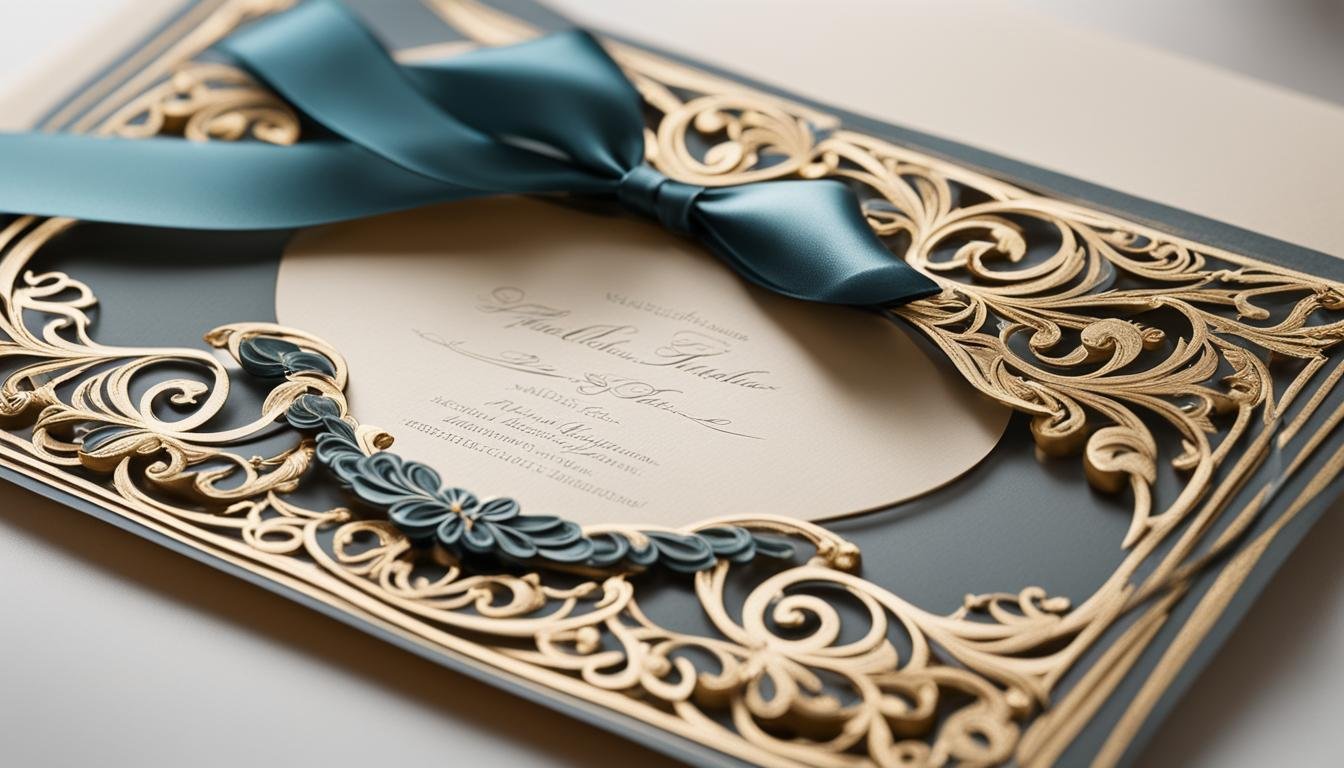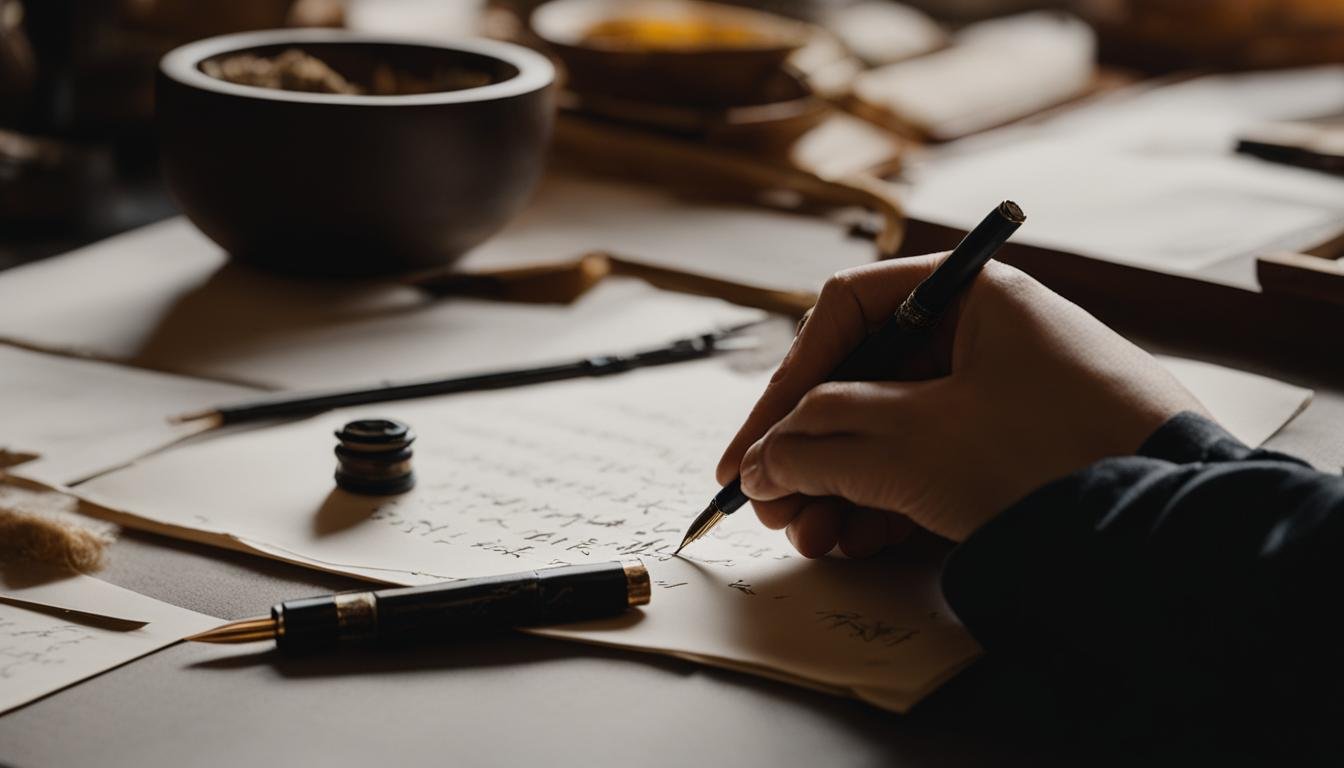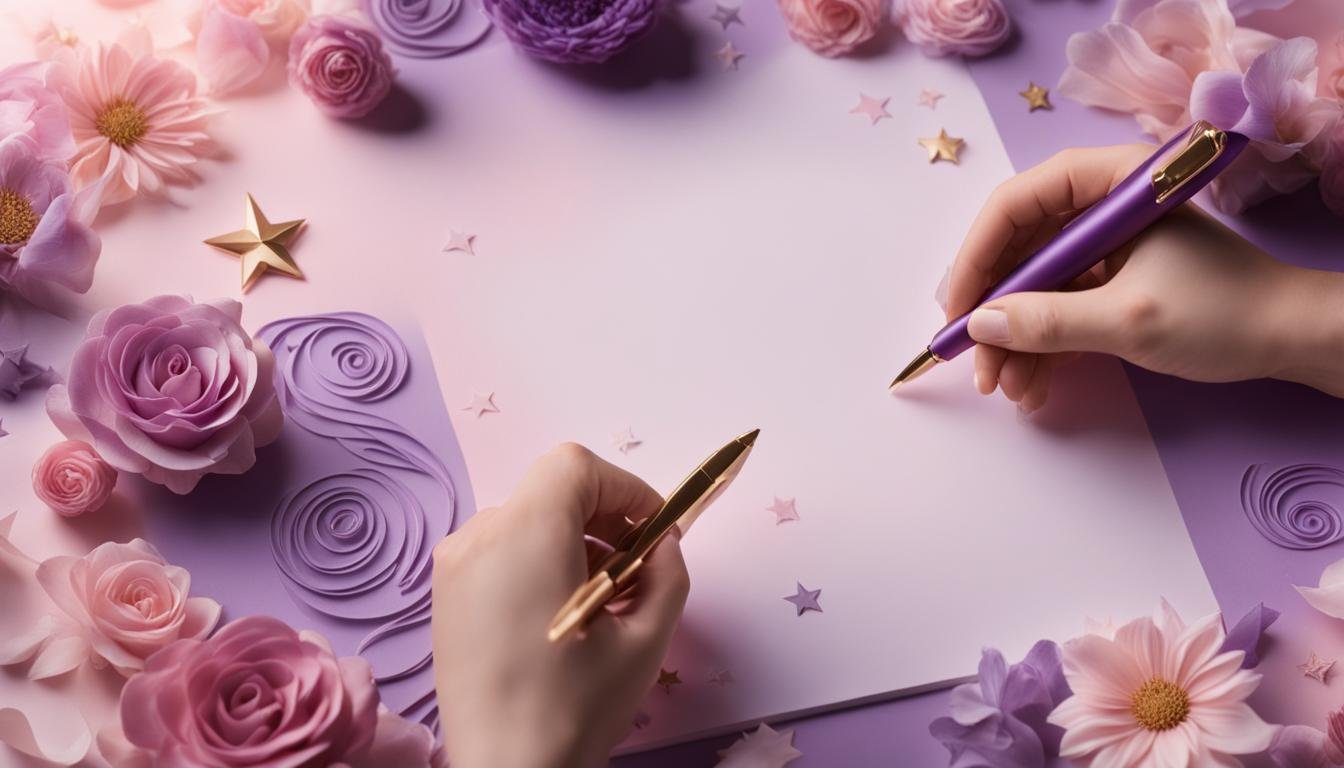Calligraphy Alphabet Basics: Techniques for Each Letter
Discover the beauty of calligraphy letters with our comprehensive guide to Calligraphy Alphabet Basics. Whether you’re drawn to the elegance of traditional calligraphy or the modern flair of digital calligraphy, this A-Z guide will provide you with the knowledge and inspiration you need to create stunning handwritten pieces.
Key Takeaways
- Explore the different styles of calligraphy alphabets, from traditional to modern.
- Learn the techniques and strokes used to write calligraphy letters.
- Discover the freedom of creating your own unique calligraphy alphabets.
- Master the intricacies of Copperplate and brush calligraphy styles.
- Expand your repertoire with historical scripts and playful bubble letters.
How Do You Write The Alphabet In Calligraphy?
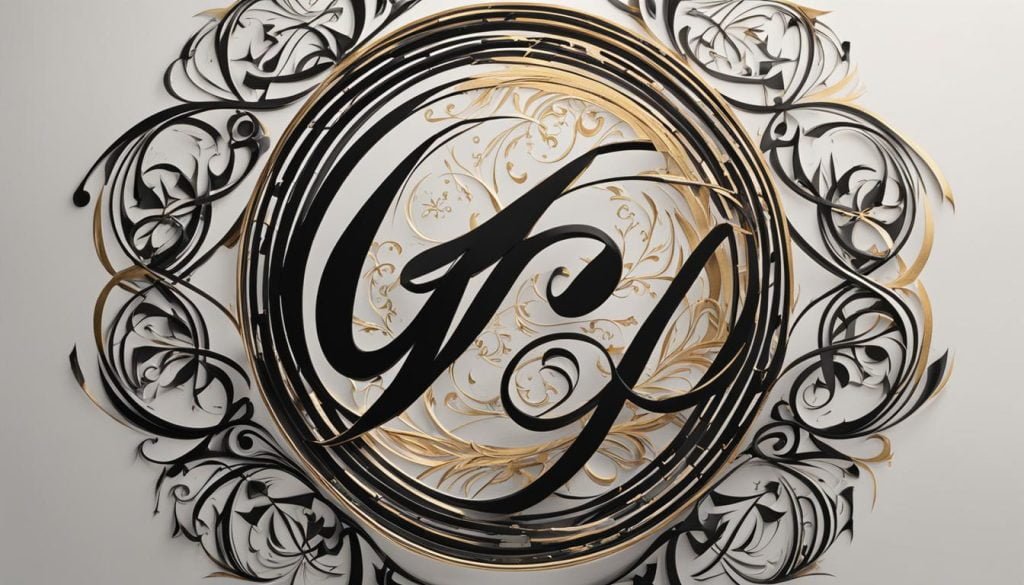
Writing calligraphy letters is a unique skill that differs from regular handwriting, such as cursive. It involves a deliberate and artistic approach to letter formation, focusing on each stroke to create visually appealing characters.
In calligraphy, letters are constructed one stroke at a time, using a combination of basic strokes. For example, the lowercase letter “a” in calligraphy is written using the entrance, oval, and underturn strokes. Each stroke has a specific order, and following the proper stroke sequence is essential to achieving the desired calligraphy style.
Unlike cursive, calligraphy often emphasizes the use of thick and thin lines, adding depth and dimension to the letters. This technique requires careful control of the pen pressure to create contrast and visual interest. Mastering the art of calligraphy letters takes practice, patience, and a keen eye for detail.
By understanding the basic principles of calligraphy letter formation and stroke order, you can begin your journey towards creating stunning calligraphy alphabets. Whether you choose to explore traditional or modern styles, mastering calligraphy letters opens up a world of creative possibilities and personal expression.
Creating Your Own Calligraphy Alphabets
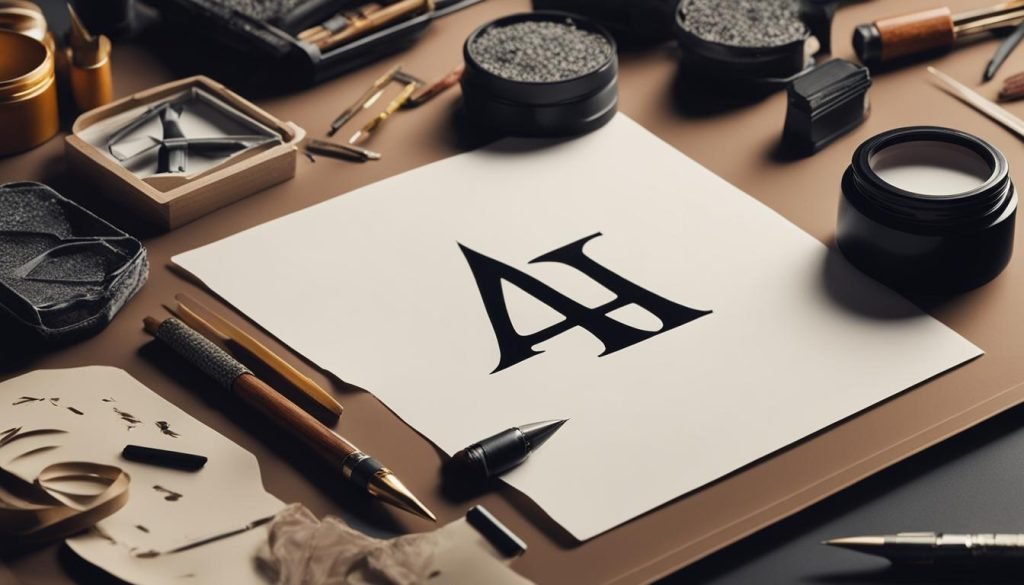
While traditional calligraphy alphabets adhere to specific rules, modern calligraphers have the freedom to create their own calligraphy alphabets with unique letterforms. This allows for exploration of different styles and personal expression. Additionally, calligraphers can even create their own calligraphy fonts based on their handwriting. By turning their calligraphy or hand lettering into a calligraphy font, they can further customize their alphabets and create their unique style.
Creating your own calligraphy alphabets is an exciting and creative process. It starts with studying and practicing existing calligraphy styles to understand the fundamentals of letterforms, strokes, and spacing. Once you have a solid foundation, you can begin experimenting with variations and adding your personal touch to create unique letterforms.
One approach to creating your own calligraphy alphabets is to combine elements from different styles. For example, you can blend the elegance of Copperplate calligraphy with the playfulness of brush calligraphy to create a new hybrid style. The key is to experiment and find what resonates with you and your artistic vision.
Another way to create your own calligraphy alphabets is by exploring different techniques and tools. For instance, you can experiment with unconventional writing instruments like sticks, feathers, or even unconventional materials to create distinct textures and lines. You can also incorporate other art forms, such as watercolor or collage, into your calligraphy to add depth and visual interest.
By creating your own calligraphy alphabets, you have the opportunity to develop a unique style that reflects your personality and artistic vision. Embrace the freedom to explore, experiment, and push the boundaries of traditional and modern calligraphy. Let your imagination run wild, and create something truly extraordinary.
Examples of Unique Calligraphy Alphabets:
| Style | Description |
|---|---|
| Whimsical | A playful and quirky alphabet with exaggerated curves and looped strokes. |
| Geometric | A minimalist alphabet with clean lines and symmetrical shapes. |
| Botanical | An alphabet inspired by nature, featuring floral motifs and organic forms. |
| Gothic Fusion | A fusion of Gothic calligraphy and contemporary letterforms, combining traditional elegance with a modern twist. |
Remember, creating your own calligraphy alphabet is a journey of self-expression and exploration. Don’t be afraid to make mistakes and try new techniques. With practice and experimentation, you will develop a unique calligraphy style that is truly your own.
Copperplate Calligraphy Alphabets
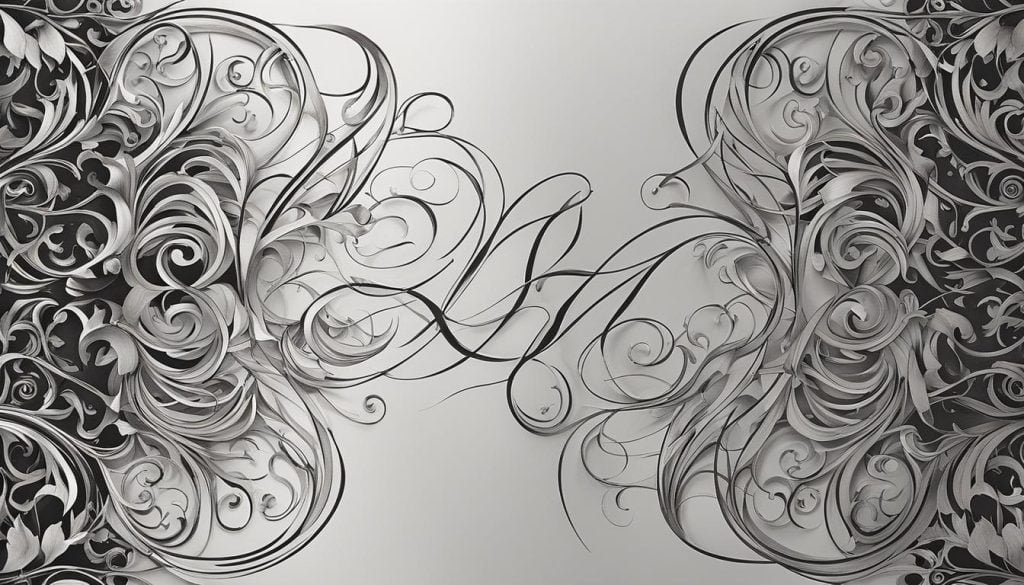
Copperplate calligraphy is a popular traditional script that is written with a pointed pen. This style of calligraphy is known for its elegant and sophisticated appearance, making it a favorite among calligraphers. It is often used for formal invitations, certificates, and other special occasions.
The lowercase letters in Copperplate calligraphy are created with a 55-degree angle and require multiple lift-offs of the pen per letter. This meticulous process helps to achieve the distinct thick and thin lines that are characteristic of Copperplate calligraphy.
“Copperplate calligraphy is like dancing with the pen. The flow and rhythm of each stroke create a beautiful harmony on the page.” – Calligraphy enthusiast
The uppercase letters, also known as majuscules, in Copperplate calligraphy are constructed using five basic strokes instead of the traditional eight. This simplification allows for a more efficient and streamlined process.
| Lowercase Letters | Uppercase Letters |
|---|---|
| a | A |
| b | B |
| c | C |
| d | D |
The mastery of Copperplate calligraphy takes time and practice, but the end result is a beautifully crafted alphabet that exudes elegance and sophistication. Whether you’re a beginner or an experienced calligrapher, exploring Copperplate calligraphy can add a touch of timeless grace to your lettering.
Brush Calligraphy Alphabet Step by Step
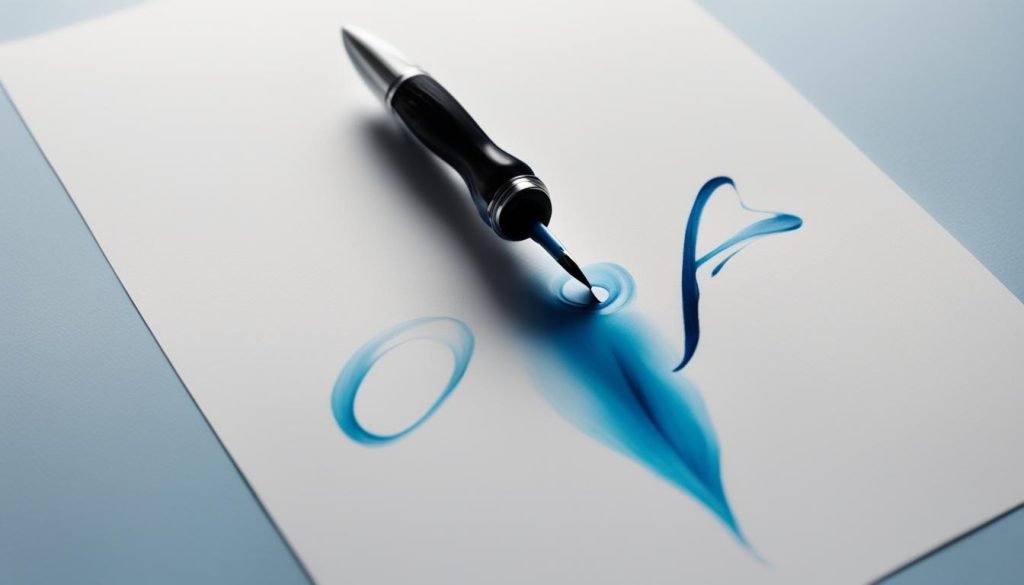
Brush calligraphy is a popular modern calligraphy style that adds a unique touch to your handwritten projects. With its fluid strokes and varying line weights, brush calligraphy can create beautiful and expressive letters. If you’re interested in learning this art form, here is a step-by-step guide to creating a brush calligraphy alphabet.
Lowercase Letters
To start, let’s focus on mastering the lowercase letters. Begin by using a brush pen with a flexible tip that allows for variations in stroke thickness. Here are the basic steps to create each lowercase letter:
- Start with a light upward stroke, called the entrance stroke, to create the starting point of the letter.
- Continue with a downward stroke, applying more pressure to create a thicker line.
- Transition into an upward stroke, gradually reducing the pressure to create a thinner line.
- Complete the letter with a loop or tail, adding your personal touch to each character.
Remember to practice the basic strokes and letterforms consistently to develop muscle memory and improve your brush calligraphy skills.
Uppercase Letters
Once you feel comfortable with the lowercase letters, you can move on to mastering the uppercase letters. Here are the steps to create each uppercase letter:
- Start with a light downward stroke to establish the height and width of the letter.
- Add thickness to certain parts of the letter by applying more pressure to your brush pen.
- Create any loops or curves specific to each uppercase letter.
By practicing these steps and experimenting with different letterforms, you’ll be able to create a unique brush calligraphy alphabet that reflects your personal style.
Remember, practice is key when it comes to mastering brush calligraphy. Take your time, be patient with yourself, and enjoy the process of creating beautiful letterforms.
Summary
Brush calligraphy is a versatile and creative form of calligraphy that allows you to express yourself through beautiful letterforms. By following the step-by-step guide provided, you can start creating your own brush calligraphy alphabet with lowercase and uppercase letters. Remember to practice regularly and experiment with different styles to develop your unique brush calligraphy style.
Roman Rustic Capitals and Other Historical Scripts
In addition to traditional and modern calligraphy styles, there is a rich history of different scripts that are worth exploring. These historical scripts have their own unique characteristics and can add depth and variety to your calligraphy practice. Some of the notable historical scripts include Roman rustic capitals, Uncial, Gothic, and Italic.
Roman Rustic Capitals
Roman rustic capitals are a robust and impactful calligraphy alphabet. They were widely used in ancient Rome and are characterized by their strong, bold lines. The letters have a timeless quality and exude a sense of strength and power. Roman rustic capitals are often associated with the grandeur of ancient civilizations and can add a touch of classical elegance to your calligraphy projects.
Uncial Script
Uncial is another historical script that originated in the early Christian Church. It has a rounded and flowing form, with letters that are often interconnected. Uncial calligraphy alphabets have a unique charm and convey a sense of spirituality and grace. They are perfect for adding a touch of medieval beauty to your calligraphy work.
Gothic Calligraphy
Gothic calligraphy alphabets, also known as blackletter, were widely used in medieval Europe. They are characterized by their intricate and elaborate letterforms, with sharp, angular lines. Gothic calligraphy alphabets have a distinctively bold and dramatic appearance, making them ideal for creating eye-catching and impactful designs.
Italic Script
Italic calligraphy is known for its elegant and legible letterforms. It originated during the Renaissance in Italy and is characterized by its slanted and flowing cursive style. Italic calligraphy alphabets have a sophisticated and graceful look, making them suitable for a wide range of applications, from formal invitations to artistic compositions.
By exploring these historical scripts and practicing their unique letterforms, you can expand your calligraphy repertoire and develop a broader understanding of the art of script. Each script has its own distinct personality and history, allowing you to add depth and variety to your calligraphy projects. Whether you’re drawn to the timeless beauty of Roman rustic capitals, the spiritual grace of Uncial, the dramatic impact of Gothic, or the elegant legibility of Italic, these historical scripts offer endless possibilities for artistic expression and creativity.
| Script | Characteristics | Applications |
|---|---|---|
| Roman Rustic Capitals | Robust and impactful | Add classical elegance |
| Uncial | Rounded and flowing | Create medieval beauty |
| Gothic | Intricate and elaborate | Make eye-catching designs |
| Italic | Elegant and legible | Suitable for various applications |
“The historical scripts like Roman rustic capitals, Uncial, Gothic, and Italic offer a treasure trove of inspiration for calligraphers. Each script has its own unique characteristics and brings its own mood and personality to the page. Whether you’re looking to add a touch of grandeur with Roman rustic capitals or evoke a sense of spirituality with Uncial, these historical scripts can elevate your calligraphy to new heights.”
Roundhand: The Simple and Elegant Calligraphy Alphabet
Roundhand is a modern calligraphy alphabet that draws inspiration from the scripts of the Italian Renaissance. With its simplicity and elegance, Roundhand is a versatile style that can be used for a wide range of purposes, from poems and quotes to letters and invitations. By mastering the techniques of Roundhand, you can enhance your cursive handwriting skills and add a touch of sophistication to your calligraphy repertoire.
Inspired by the craftsmanship of the Italian Renaissance, Roundhand embodies values of simplicity and sincerity. Its display letters are characterized by their clear and legible forms, making them suitable for various applications. Whether you’re writing a heartfelt note or creating eye-catching signage, Roundhand’s elegant strokes and balanced proportions will elevate your calligraphy to a new level.
The beauty of Roundhand lies in its simplicity and the sincerity it conveys. It allows for a more personal and heartfelt connection with your audience, making it perfect for expressing your emotions through the written word.
Mastering Roundhand: Tips and Techniques
To master Roundhand calligraphy, it’s essential to understand the key principles and techniques of the style. Here are some tips to help you get started:
- Practice letterforms: Begin by practicing individual letterforms, paying attention to the shape and proportion of each letter. Focus on achieving consistent pen pressure and stroke thickness.
- Study exemplars: Study examples of Roundhand calligraphy to familiarize yourself with the style. Analyze the letterforms, stroke order, and overall composition to gain insights into the principles of Roundhand.
- Experiment with variations: Once you feel comfortable with the basic Roundhand style, don’t be afraid to experiment with variations. Explore different letterforms, flourishes, and embellishments to add your personal touch to the style.
By dedicating time to practice and experimenting with Roundhand, you can develop your own unique interpretation of this elegant calligraphy alphabet and create visually captivating pieces of handwritten art.
Copperplate Style: The Fine Art of Engraved Letters
When it comes to calligraphy, the Copperplate style is considered a true masterpiece. Inspired by the engraved letters found in eighteenth- and nineteenth-century engravings on copper plates, this elegant script is a fine art in itself. Copperplate style calligraphy is usually written with a flexible steel nib, which allows for precise control and beautiful variation in line thickness.
One of the distinctive features of Copperplate style calligraphy is the contrast between thicks and thins. The downstrokes are created with more pressure, resulting in thick lines, while the upstrokes are lighter and thinner. This interplay of thick and thin lines gives the script its distinctive and sophisticated look.
“Copperplate style calligraphy imitates the finesse and intricacy of engraved letters. It requires patience and practice, but the end result is truly stunning.” – Calligraphy Master
Mastering the techniques and styles of Copperplate can take time and effort, but the journey is well worth it. With its timeless elegance and old-fashioned charm, Copperplate style calligraphy is a favorite among calligraphers and art enthusiasts alike. Whether you’re creating wedding invitations, certificates, or personalized artwork, Copperplate can elevate your work to a whole new level of beauty and craftsmanship.
So, if you’re ready to delve into the world of fine engraved letters, grab your flexible steel nib and start practicing Copperplate style calligraphy. Let your imagination flow as you create stunning pieces of art that showcase the true essence of this extraordinary script.
Table: Comparing Copperplate Style with Other Calligraphy Styles
| Calligraphy Style | Writing Tool | Line Variation | Characteristic |
|---|---|---|---|
| Copperplate | Flexible steel nib | Thicks and thins | Elegance and old-fashioned charm |
| Brush Calligraphy | Brush pen | Varying pressure | Bold and expressive |
| Roundhand | Pointed pen | Consistent line weight | Simple and elegant |
Bubble Letters: Fun and Playful Calligraphy Alphabet
While not traditionally considered a calligraphy alphabet, bubble letters offer a fun and playful twist to calligraphy. These letters often have a three-dimensional or bubbly appearance, making them perfect for creating eye-catching and cheerful titles. Bubble letters can bring a touch of whimsy to your calligraphy projects and add a sense of playfulness to your designs.
“Bubble letters are like little bursts of happiness on paper. They instantly grab attention and can make any text feel more cheerful,” says renowned calligrapher Sarah Thompson. “The rounded and puffy shapes give a friendly and approachable vibe, making bubble letters a popular choice for informal and fun occasions.”
Creating bubble letters is relatively simple. Start by sketching out the outlines of the letters, giving them a rounded and inflated look. Then, fill in the outlines with color, leaving a small gap between the outer edge of the bubble and the inner part of the letter. This creates the illusion of depth and makes the letters look three-dimensional. Experiment with different colors and shading techniques to make your bubble letters even more vibrant and dynamic.
Using Bubble Letters
Bubble letters are versatile and can be used in various ways. They are particularly well-suited for playful titles, such as children’s book covers, party invitations, or greeting cards. Their cheerful and lighthearted nature adds a sense of joy to any design. Additionally, bubble letters can be combined with other calligraphy alphabets to create unique and visually engaging compositions. Mix and match bubble letters with traditional or modern styles to add a pop of fun to your calligraphy projects.
Next time you want to add a touch of whimsy and playfulness to your calligraphy, give bubble letters a try. Their fun and cheerful appearance will surely make your designs stand out and bring smiles to everyone who sees them.
Conclusion – Calligraphy Alphabet Basics
Basics Calligraphy Alphabet is your comprehensive guide to exploring different calligraphy alphabets and developing your calligraphy skills. Whether you’re interested in traditional or modern styles, there’s a simple calligraphy alphabets for you to practice and personalize.
By following the step-by-step instructions, practicing the basic strokes, and experimenting with different styles, you can embark on a journey of exploration and self-expression. Through dedicated practice, you’ll find inspiration in every stroke, and gradually develop your own unique calligraphy style.
Calligraphy is not just about creating beautiful handwritten pieces; it’s a form of art that allows you to express your personal style and creativity. As you delve deeper into the world of calligraphy, you’ll discover the joy of bringing words to life through the art of script.
So, start your calligraphy journey today! With patience and dedication, you’ll unlock the full potential of your artistic abilities and create stunning pieces that reflect your passion and personal style. Keep practicing, stay inspired, and let your creativity flow through the timeless beauty of calligraphy!
FAQ – Calligraphy Alphabet Basics
What are the different styles of calligraphy alphabets?
The different styles of calligraphy alphabets include traditional styles like Copperplate and historical scripts like Roman rustic capitals and Gothic, as well as modern styles like brush calligraphy and Roundhand.
How is calligraphy different from handwriting?
Calligraphy involves creating letters one stroke at a time using basic strokes, while handwriting is a continuous flow of writing. Calligraphy requires following specific stroke orders and letterforms for each alphabet.
Can I create my own calligraphy alphabets?
Yes, modern calligraphers have the freedom to create their own calligraphy alphabets with unique letterforms. They can even turn their calligraphy or hand lettering into a calligraphy font for further customization.
What is Copperplate calligraphy?
Copperplate calligraphy is a traditional script that is written with a pointed pen. It has distinctive thin and thick lines and is known for its elegance. It provides a solid foundation for learning traditional calligraphy styles.
How do I create a brush calligraphy alphabet?
To create a brush calligraphy alphabet, you need to master the basic calligraphy strokes and follow step-by-step instructions. Practicing these strokes will help you create beautiful brush calligraphy alphabets.
What are some historical scripts worth exploring in calligraphy?
Some historical scripts worth exploring in calligraphy include Roman rustic capitals, Uncial, Gothic, and Italic. These scripts add depth and variety to your calligraphy practice.
What is Roundhand calligraphy?
Roundhand is a modern calligraphy alphabet based on the scripts of the Italian Renaissance. It is known for its simplicity and elegance and is suitable for a wide range of uses, including poems and letters.
What is Copperplate style calligraphy?
Copperplate style calligraphy imitates the fine art of engraved letters found in eighteenth- and nineteenth-century engravings on copper plates. It is written with a flexible steel nib, allowing for varying line thickness.
Can bubble letters be considered a basic calligraphy alphabet?
While not traditionally considered a calligraphy alphabet, bubble letters offer a fun and playful twist to calligraphy. They have a three-dimensional or bubbly appearance and are perfect for humorous or cheerful titles.
How can I develop my calligraphy skills and create my own unique style?
By following the step-by-step instructions, practicing the basic strokes, and experimenting with different styles, you can develop your unique calligraphy style. Practice, exploration, and personal expression are key to improving your calligraphy skills.


